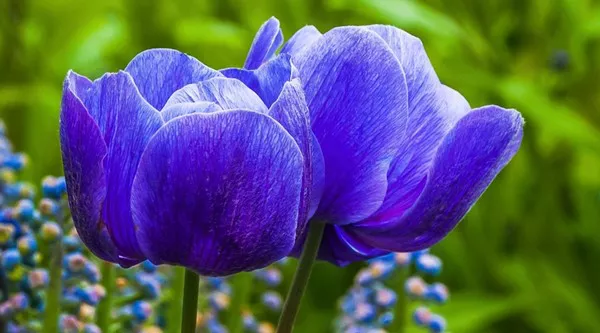Nature’s palette offers an array of colors, and among them, blue has always captivated humanity with its serene and calming allure. Blue flowers are relatively uncommon compared to other hues, making them all the more cherished and sought after by horticulturalists, botanists, and enthusiasts alike. In this article, we will delve into the realm of rare blue flowers, exploring their enchanting beauty and the factors contributing to their scarcity.
Defining Rarity in the World of Flowers
Rarity in flowers can be attributed to a combination of factors, such as geographic distribution, habitat specificity, limited pollination, and human intervention. A rare blue flower is one that is seldom encountered in nature or cultivation, and its occurrence is often limited to specific regions or microhabitats.
1. The Ultra-Rare Himalayan Blue Poppy (Meconopsis spp.)
Among the most coveted blue flowers is the Himalayan Blue Poppy, belonging to the genus Meconopsis. These striking flowers are native to the Eastern Himalayas and western China, thriving in cool, alpine environments. The unique blue hue of the petals, often resembling the vivid azure of the sky, adds to their mystique. However, their cultivation remains a challenge, making them a rarity in gardens worldwide.
2. The Allure of the Ghostly Blue Himalayan Forget-Me-Not (Cynoglossum nervosum)
Found in the Himalayan region, the Cynoglossum nervosum, commonly known as the Ghostly Blue Himalayan Forget-Me-Not, is an ethereal beauty with delicate blue blossoms. Flourishing in rocky terrains and high altitudes, these flowers remain elusive to most. Their ghostly appearance, combined with the soothing blue petals, contributes to their enigmatic charm.
3. Unraveling the Mystery of the Blue Jacaranda (Jacaranda mimosifolia)
The Blue Jacaranda, native to South America, is a magnificent tree that transforms landscapes with its vibrant blue flowers during the blooming season. Though widely cultivated in regions with suitable climates, it remains rare in its natural habitat. The exquisite blue clusters against a backdrop of lush green leaves create a breathtaking sight, attracting admirers from all corners of the globe.
4. The Enchanting Blue Passionflower (Passiflora caerulea)
Known for its intricate and captivating blooms, the Blue Passionflower is a rare gem among climbing plants. Native to South America, it boasts blue and white petals surrounding a unique, fringed crown, called the corona. Its rarity adds to its allure, and it has inspired numerous artists and poets with its exquisite design.
Human Impact: Conservation and Preservation Efforts
Human activities, such as habitat destruction, deforestation, and climate change, pose significant threats to rare blue flowers. Conservation efforts are crucial in preserving these delicate species and preventing them from vanishing forever. Botanical gardens, seed banks, and protected areas play a vital role in safeguarding the biodiversity of these unique flowers.
The Role of Hybridization and Selective Breeding
In an attempt to expand the variety and availability of blue flowers, horticulturists often resort to hybridization and selective breeding. While these practices can lead to a wider range of blue-flowered cultivars, they can also threaten the genetic integrity of native species and their ecosystems. Striking a balance between preservation and innovation is essential to protect the natural diversity of rare blue flowers.
Conclusion
The allure of rare blue flowers lies not only in their captivating beauty but also in their scarcity and the inherent challenges associated with their cultivation. Each species holds a unique story, intricately intertwined with their natural habitats and the delicate balance of the ecosystem. Understanding the factors contributing to their rarity and the significance of preserving them for future generations is crucial in ensuring their continued existence in the botanical world. As we strive to protect these enigmatic wonders, may we find inspiration and solace in the mesmerizing hues of nature’s rarest blue flowers.


